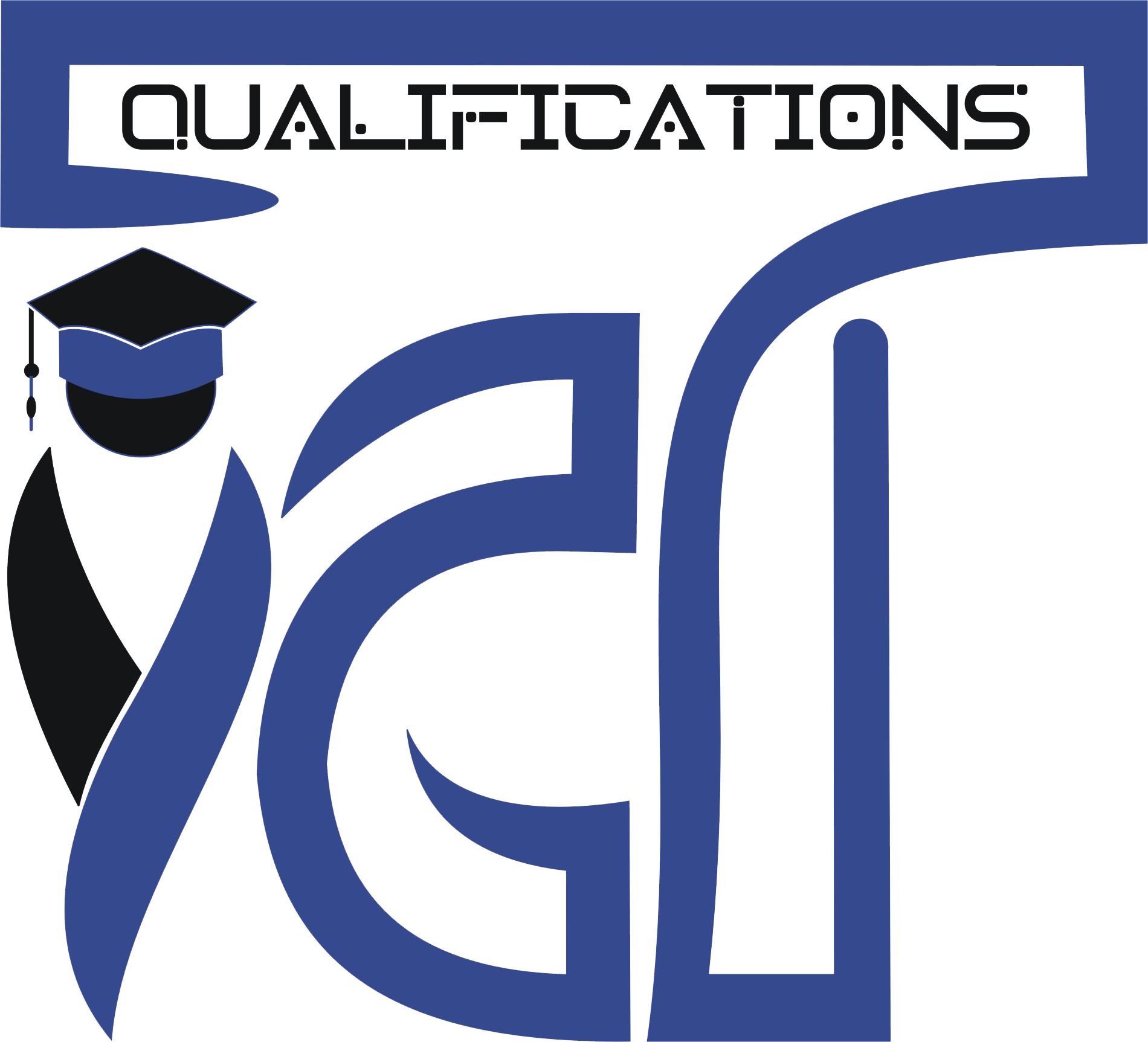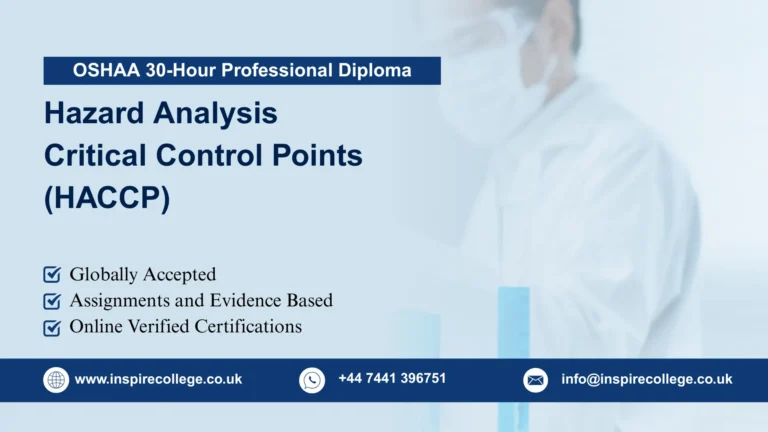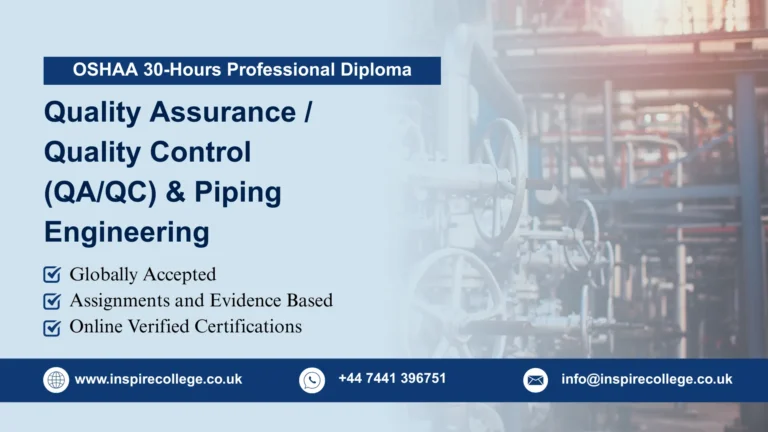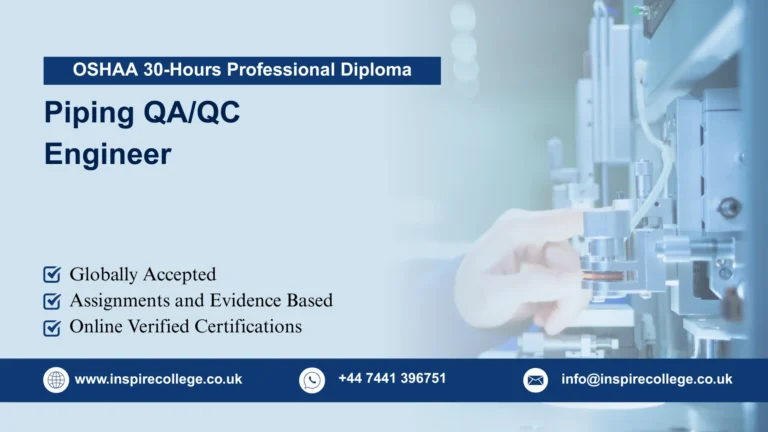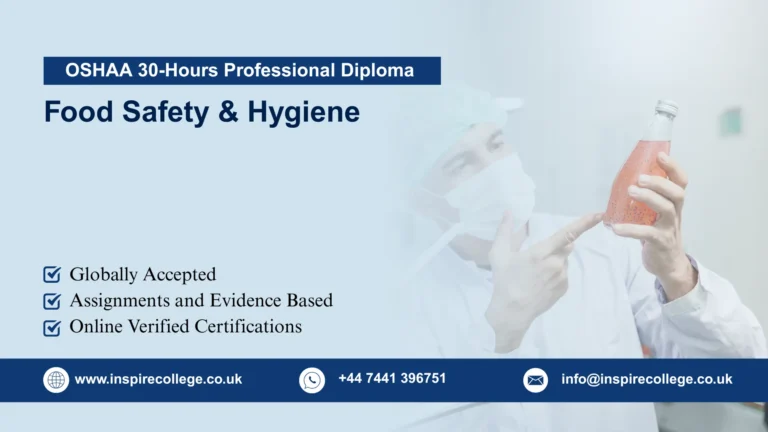
OSHAA 30-Hours Diploma in Powered Lifting Machines (PLM)
Powered lifting machines are essential assets in construction, industrial, and offshore operations, facilitating the safe and efficient movement of heavy loads. The OSHAA 30-Hours Diploma in Powered Lifting Machines (PLM) is designed to provide professionals with comprehensive knowledge and practical skills required to operate, inspect, maintain, and manage powered lifting equipment safely and efficiently.
This OSHAA 30-Hours Diploma in Powered Lifting Machines (PLM) covers the full scope of powered lifting machines, including cranes, hoists, forklifts, and other mechanized lifting systems. Participants will gain a clear understanding of international and regional safety regulations, including OSHAA standards, ISO guidelines, and industry-specific codes, ensuring full compliance and operational safety. The course emphasizes both theoretical knowledge and practical applications, allowing learners to apply safe lifting techniques, conduct risk assessments, perform preventive maintenance, and respond effectively to operational hazards.
Learners will acquire hands-on expertise in load calculations, machine inspections, signaling procedures, and troubleshooting, equipping them to prevent accidents, reduce downtime, and enhance operational efficiency. OSHAA 30-Hours Diploma in Powered Lifting Machines (PLM) also highlights emergency response protocols and hazard management strategies, ensuring participants can handle unexpected situations safely.
By completing OSHAA 30-Hours Diploma in Powered Lifting Machines (PLM), professionals will strengthen their credentials and enhance career opportunities in construction, industrial, offshore, and logistics sectors. Whether you are a crane operator, lifting supervisor, safety officer, or maintenance technician, this course provides the essential skills and certification needed to ensure safe, compliant, and efficient powered lifting operations.
Investing in the OSHAA 30-Hours Diploma in Powered Lifting Machines (PLM) empowers individuals to achieve regulatory compliance, operational excellence, and enhanced workplace safety, making it a pivotal step for career advancement in heavy lifting and industrial operations.
Entry Requirements – OSHAA 30-Hours Diploma in Powered Lifting Machines (PLM)
- Minimum Age
- Applicants must be at least 18 years old to enroll.
- Ensures learners have the necessary maturity and responsibility for handling powered lifting equipment safely.
- Supports readiness for both theoretical learning and practical, hands-on training.
- Educational Background
- A minimum of a high school diploma or equivalent qualification is required.
- Candidates with technical or vocational training in mechanical, electrical, industrial, or engineering disciplines are preferred.
- Provides a foundational understanding necessary for grasping operational principles and safety regulations in lifting operations.
- Relevant Work Experience
- Prior experience in crane operation, industrial lifting, material handling, or construction is beneficial but not mandatory.
- The course accommodates beginners seeking structured training as well as experienced professionals aiming to update and enhance their skills.
- Practical experience enhances understanding of safety protocols, equipment handling, and operational efficiency.
- Language Proficiency
- Participants must have sufficient proficiency in English.
- Enables effective comprehension of course materials, technical manuals, and safety documentation.
- Supports accurate completion of assessments and clear communication during practical exercises.
- Commitment to Health and Safety
- Candidates must demonstrate a strong commitment to workplace safety practices and regulatory compliance.
- Encourages consistent application of safety protocols during training and real-world lifting operations.
- Reinforces awareness of risk management and hazard prevention.
- Access to Required Resources
- Learners should have reliable access to classroom or online sessions, assignments, and practical demonstration facilities.
- Ensures uninterrupted participation and the ability to fully engage with both theoretical and hands-on components of the course.
- Continuous Professional Development (CPD) Readiness
- Participants should be willing to engage in ongoing professional development.
- The knowledge and skills gained provide a foundation for advanced certifications, supervisory roles, and leadership positions in lifting operations.
- Supports career progression and alignment with international best practices in powered lifting machine management.
Mandatory Units
The OSHAA 30-Hours Diploma in Powered Lifting Machines (PLM) consists of 6 units .
Mandatory Units
- Introduction to OSHAA and Powered Lifting Safety Regulations (2 Hours)
- Types and Functions of Powered Lifting Machines (3 Hours)
- Load Capacity Assessment and Equipment Selection (4 Hours)
- Safe Operation Techniques for Cranes, Forklifts, and Hoists (4 Hours)
- Mechanical and Electrical Safety in Lifting Operations (3 Hours)
- Pre-Use Inspection and Preventive Maintenance Procedures (3 Hours)
- Hazard Identification and Risk Assessment for Powered Lifting (3 Hours)
- Rigging and Load Securing Techniques for Powered Lifts (3 Hours)
- Communication, Signaling, and Team Coordination During Lifts (3 Hours)
- Emergency Response, Incident Management, and Final Review (2 Hours)
Introduction to OSHAA and Powered Lifting Safety Regulations (2 Hours)
- Introduces learners to the framework of OSHAA regulations for powered lifting machines.
- Explains the importance of workplace safety in industrial, construction, and offshore environments.
- Highlights key international and regional safety standards applicable to powered lifting operations.
- Defines the responsibilities of employers, supervisors, and machine operators in compliance with safety regulations.
- Emphasizes the role of regulatory compliance in minimizing risks and ensuring operational efficiency.
Types and Functions of Powered Lifting Machines (3 Hours)
- Explores various types of powered lifting equipment, including cranes, hoists, forklifts, and specialized lifting devices.
- Discusses operational functions, advantages, and limitations of each machine type.
- Provides guidance on selecting the most suitable lifting equipment for specific tasks and industrial applications.
- Enhances understanding of equipment capabilities in diverse work environments.
Load Capacity Assessment and Equipment Selection (4 Hours)
- Teaches accurate load calculations, considering weight distribution and machine limitations.
- Introduces interpretation of load charts for cranes, forklifts, and hoists.
- Guides learners in selecting appropriate equipment for operational needs.
- Emphasizes safe load handling to prevent accidents, equipment failure, and operational inefficiencies.
Safe Operation Techniques for Cranes, Forklifts, and Hoists (4 Hours)
- Develops practical skills for operating powered lifting machines safely.
- Covers proper movement, positioning, and load handling procedures.
- Reinforces standard operating procedures (SOPs) to minimize operational errors.
- Highlights strategies to maintain workplace safety during lifting operations.
Mechanical and Electrical Safety in Lifting Operations (3 Hours)
- Identifies potential mechanical and electrical hazards associated with powered lifting.
- Teaches implementation of lockout/tagout procedures for maintenance and repairs.
- Covers monitoring of machine safety components to ensure safe operations.
- Stresses compliance with inspection routines and preventive measures to reduce risk.
Pre-Use Inspection and Preventive Maintenance Procedures (3 Hours)
- Provides skills to conduct thorough pre-use inspections and identify mechanical or electrical faults.
- Introduces preventive maintenance routines to extend equipment lifespan and ensure safe operation.
- Emphasizes proper documentation and record-keeping for regulatory compliance.
- Ensures learners understand the importance of equipment reliability in lifting operations.
Hazard Identification and Risk Assessment for Powered Lifting (3 Hours)
- Enables learners to recognize hazards in powered lifting environments.
- Introduces structured approaches for conducting risk assessments.
- Teaches implementation of appropriate control measures to mitigate operational risks.
- Encourages proactive safety planning to prevent workplace accidents.
Rigging and Load Securing Techniques for Powered Lifts (3 Hours)
- Covers safe rigging practices and proper sling configurations.
- Explains techniques to secure loads and prevent shifting or imbalance during lifts.
- Highlights the importance of load center of gravity, distribution, and stability.
- Prepares learners to safely execute lifting operations with diverse loads and conditions.
Communication, Signaling, and Team Coordination During Lifts (3 Hours)
- Focuses on clear communication between operators, spotters, and lifting teams.
- Teaches standard hand signals, radio protocols, and coordination strategies.
- Enhances team synchronization and ensures safety during complex lifting operations.
- Stresses the importance of effective communication for preventing accidents and operational delays.
Emergency Response, Incident Management, and Final Review (2 Hours)
- Provides guidance on emergency response procedures for powered lifting incidents.
- Covers incident reporting, documentation, and post-incident analysis.
- Introduces strategies for mitigating risks during unexpected operational emergencies.
- Reinforces key course concepts in a final review, preparing learners for assessments and practical application.
The OSHAA 30-Hours Diploma in Powered Lifting Machines (PLM) is designed for professionals and individuals involved directly or indirectly in powered lifting operations, focusing on operational safety, efficiency, and compliance with OSHAA and international standards. This course is ideal for:
- Crane, Forklift, and Hoist Operators
- Operators seeking internationally recognized certification to validate their skills.
- Individuals aiming to enhance technical expertise in safe lifting, load handling, and adherence to OSHAA regulations.
- Professionals looking to improve operational efficiency while reducing workplace risks.
- Riggers and Lifting Crew Members
- Personnel assisting in powered lifting tasks who require practical knowledge of rigging techniques.
- Training on load securing, sling configurations, and safe operational procedures.
- Emphasis on teamwork and coordination during lifting operations.
- Site Supervisors and Safety Officers
- Professionals responsible for overseeing lifting operations and enforcing safety protocols.
- Training in team management, hazard identification, and compliance monitoring.
- Skills to ensure all lifting activities meet regulatory and workplace safety standards.
- Mechanical and Electrical Technicians
- Technicians involved in inspection, maintenance, and repair of powered lifting machines.
- Knowledge of mechanical and electrical safety systems, preventive maintenance, and fault detection.
- Ensures reliable and safe operation of cranes, forklifts, hoists, and related equipment.
- Construction and Industrial Workers
- Individuals engaged in material handling, heavy machinery operation, and lifting tasks.
- Training on safe lifting practices, load assessment, and operational hazard reduction.
- Focus on improving workplace efficiency while maintaining strict safety standards.
- HSE Professionals
- Health, Safety, and Environment officers seeking to advance credentials in lifting safety.
- Knowledge in risk assessment, regulatory compliance, and emergency response during lifting operations.
- Ability to implement best practices across construction, industrial, or offshore sites.
- Engineering and Technical Students
- Students preparing for careers in industrial, construction, or logistics sectors.
- Foundational and practical knowledge of powered lifting machines and safe operational practices.
- Preparation for entry-level roles or advanced professional development in lifting operations.
- Warehouse and Logistics Personnel
- Staff involved in loading, unloading, and material handling with powered lifting machines.
- Emphasis on team coordination, safe handling, and proper equipment usage.
- Training ensures compliance with international and workplace safety standards.
- Maintenance Staff
- Individuals responsible for upkeep, inspection, and preventive maintenance of lifting equipment.
- Understanding of mechanical, electrical, and structural safety systems for reliable operation.
- Skills to reduce equipment downtime and prevent operational hazards.
- Aspiring Professionals in Industrial Safety
- Anyone seeking to improve knowledge of powered lifting machines, hazard management, and compliance.
- Suitable for beginners or experienced personnel aiming to upgrade skills and validate expertise.
- Focus on practical, job-ready skills applicable across multiple industries.
This diploma equips learners with practical, industry-relevant skills, combining theoretical knowledge with real-world applications. It is ideal for both new entrants and experienced professionals seeking to enhance safety, efficiency, and regulatory compliance in powered lifting operations.
Register Now
FAQs for OSHAA 30-Hours Diploma in Powered Lifting Machines (PLM)
